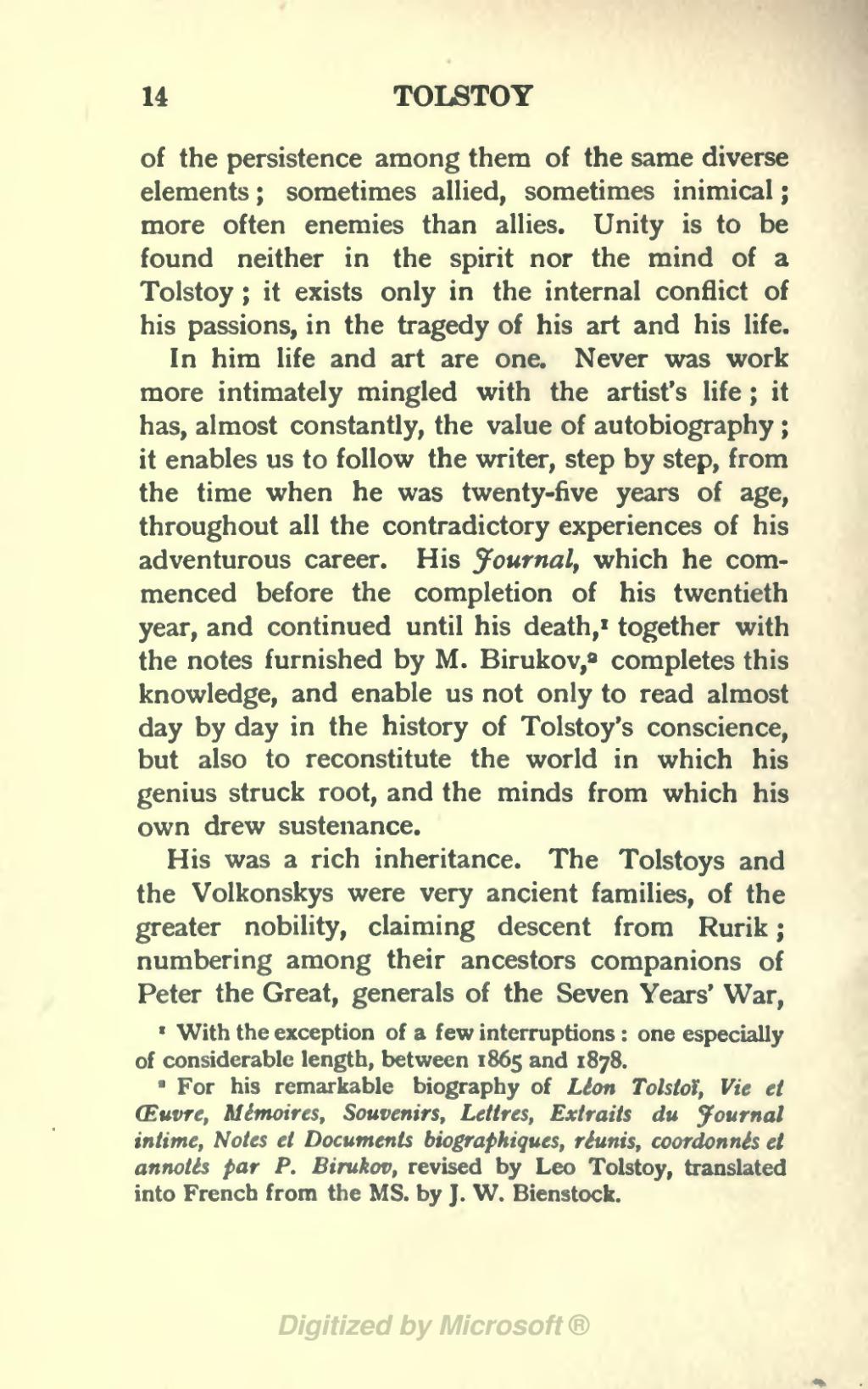of the persistence among them of the same diverse elements; sometimes allied, sometimes inimical; more often enemies than allies. Unity is to be found neither in the spirit nor the mind of a Tolstoy; it exists only in the internal conflict of his passions, in the tragedy of his art and his life.
In him life and art are one. Never was work more intimately mingled with the artist’s life; it has, almost constantly, the value of autobiography; it enables us to follow the writer, step by step, from the time when he was twenty-five years of age, throughout all the contradictory experiences of his adventurous career. His Journal, which he commenced before the completion of his twentieth year, and continued until his death,[1] together with the notes furnished by M. Birukov,[2] completes this knowledge, and enable us not only to read almost day by day in the history of Tolstoy’s conscience, but also to reconstitute the world in which his genius struck root, and the minds from which his own drew sustenance.
His was a rich inheritance. The Tolstoys and the Volkonskys were very ancient families, of the greater nobility, claiming descent from Rurik; numbering among their ancestors companions of Peter the Great, generals of the Seven Years’ War,
- ↑ With the exception of a few interruptions: one especially of considerable length, between 1865 and 1878.
- ↑ For his remarkable biography of Léon Tolstoï, Vie et Œuvre, Mémoires, Souvenirs, Lettres, Extraits du Journal intime, Notes et Documents biographiques, réunis, coordonnés et annotés par P. Birukov, revised by Leo Tolstoy, translated into French from the MS. by J. W. Bienstock.
